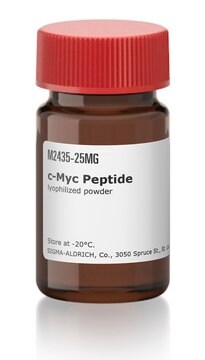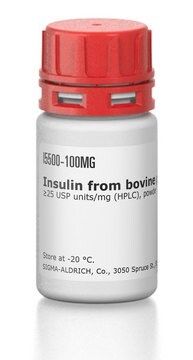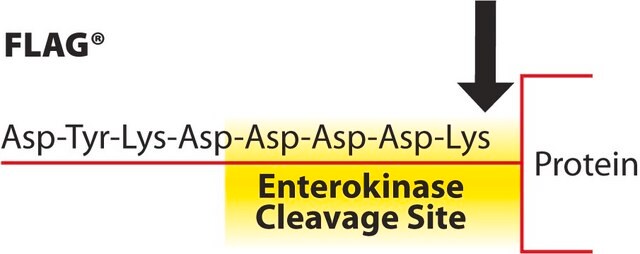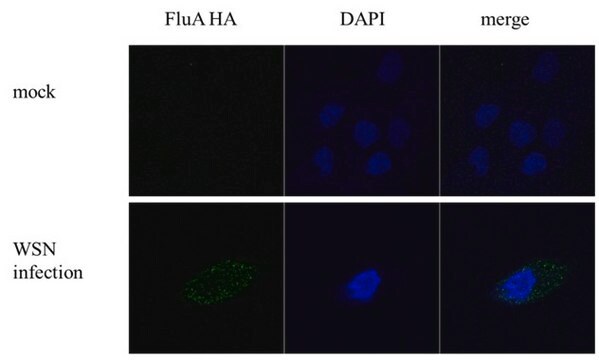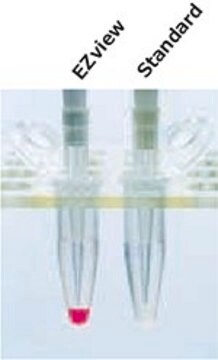I2149
Hemagglutinin Peptide
≥97% (HPLC), powder, Influenza
Sinonimo/i:
Anti-HA, HA tag peptide, HA1 fragment 98-106, Tyr-Pro-Tyr-Asp-Val-Pro-Asp-Tyr-Ala
About This Item
Prodotti consigliati
product name
Influenza Hemagglutinin (HA) Peptide, ≥97% (HPLC)
Origine biologica
synthetic
Livello qualitativo
Saggio
≥97% (HPLC)
Forma fisica
powder
PM
1102.15 Da
tecniche
protein extraction: suitable
Temperatura di conservazione
−20°C
Stringa SMILE
CC(C)[C@H](NC(=O)[C@H](CC(O)=O)NC(=O)[C@H](Cc1ccc(O)cc1)NC(=O)[C@@H]2CCCN2C(=O)[C@@H](N)Cc3ccc(O)cc3)C(=O)N4CCC[C@H]4C(=O)N[C@@H](CC(O)=O)C(=O)N[C@@H](Cc5ccc(O)cc5)C(=O)N[C@@H](C)C(O)=O
InChI
1S/C53H67N9O17/c1-27(2)44(52(77)62-21-5-7-41(62)50(75)59-38(25-42(66)67)47(72)56-36(45(70)55-28(3)53(78)79)23-30-10-16-33(64)17-11-30)60-48(73)39(26-43(68)69)57-46(71)37(24-31-12-18-34(65)19-13-31)58-49(74)40-6-4-20-61(40)51(76)35(54)22-29-8-14-32(63)15-9-29/h8-19,27-28,35-41,44,63-65H,4-7,20-26,54H2,1-3H3,(H,55,70)(H,56,72)(H,57,71)(H,58,74)(H,59,75)(H,60,73)(H,66,67)(H,68,69)(H,78,79)/t28-,35-,36-,37-,38-,39-,40-,41-,44-/m0/s1
HVLSXIKZNLPZJJ-TXZCQADKSA-N
Descrizione generale
Applicazioni
Nota sulla preparazione
Altre note
Codice della classe di stoccaggio
11 - Combustible Solids
Classe di pericolosità dell'acqua (WGK)
WGK 3
Punto d’infiammabilità (°F)
Not applicable
Punto d’infiammabilità (°C)
Not applicable
Dispositivi di protezione individuale
Eyeshields, Gloves, type N95 (US)
Certificati d'analisi (COA)
Cerca il Certificati d'analisi (COA) digitando il numero di lotto/batch corrispondente. I numeri di lotto o di batch sono stampati sull'etichetta dei prodotti dopo la parola ‘Lotto’ o ‘Batch’.
Possiedi già questo prodotto?
I documenti relativi ai prodotti acquistati recentemente sono disponibili nell’Archivio dei documenti.
I clienti hanno visto anche
Il team dei nostri ricercatori vanta grande esperienza in tutte le aree della ricerca quali Life Science, scienza dei materiali, sintesi chimica, cromatografia, discipline analitiche, ecc..
Contatta l'Assistenza Tecnica.


